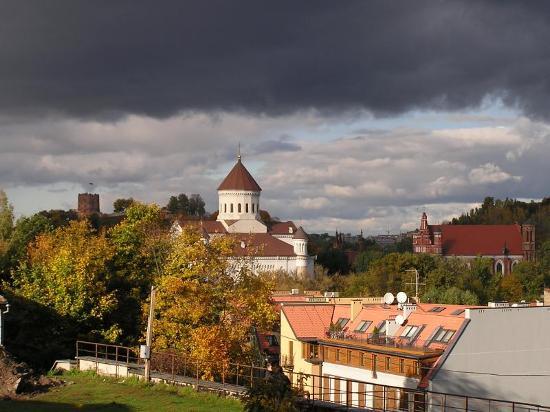 Lithuania is the fastest growing tourist destination in Europe. Summer is the best season to visit the Lithuanian cities and experience the beauty of beach life of Lithuanian seaside. Visitors can avoid the tourist rush during late spring and early autumn. If, visitors are targeting to experience the night life and restaurants only then perhaps weather does not matter.
Lithuania is the fastest growing tourist destination in Europe. Summer is the best season to visit the Lithuanian cities and experience the beauty of beach life of Lithuanian seaside. Visitors can avoid the tourist rush during late spring and early autumn. If, visitors are targeting to experience the night life and restaurants only then perhaps weather does not matter.Vilnius is one of the main Lithuanian tourist attractions. It is situated at the crossroads between Eastern Europe, Scandinavia and Western Europe. Gediminas Castle and Cathedral Square are prime sights of the city. The Old Town of Vilnius also has historical significance and it is enlisted in UNESCO world heritage list in 1994. Vilnius has been targeted to transform into capital of European Culture up to 2009 which will be a great achievement for the city in modern time.
Another, tourist attractions in Lithuania is Curonian Spit and Palanga. Curonian Spit can be recognized as the major separation line between Curonian Lagoon and Baltic Sea. It has been speculating that Curonian Spit was formed approximately 5000 years ago. On the other hand, Palanga is a seaside resort town. There is myth about the name is that it is named after a beautiful priestess who had promised the god to guard her virginity for the whole life but it could not happen and after the death of her husband ‘Kestutis’, she returned to this place and served the god until she died. Today, visitors can get here pagan’s shrine. Some famous tourist centers of Palanga are Church of Saint Marie, Zemaiciu alka, Pajurio Regional Park, Sea Bridge, the street of J. Basanavicius, Birute hill and museum of Amber.
The major pilgrimage site of Lithuania is hill of crosses. Its religious significance was recognized on September 7, 1993 when Pop John Paul II visited this place and declared it as the place of hope, peace, love and sacrifice.
Druskininkai is situated at the estuary of the Nemunas River. The USP of this place is its beautiful landscape which is amalgamation of rivers, lakes, hills and forests. It is also known as ‘spa town’ which was honored by czar Nicholas I of Russia in 1837. The first water park of Lithuania is also in the credit of Druskininkai. The city is also a prime centre of historical museums and galleries. ‘Druskininkai poetic fall’ is a very famous annual event of the city.
Thus, Lithuanian tourist attractions are perfect combination of art, culture and trendiness which have capability to attract visitors of different tastes and interests. If, someone is looking for spirituality then ‘hill of crosses’ may be the perfect choice. Similarly, Vilnius is offering balance between trendiness and historical legacy and everyone should have faith upon the administration as the city is targeted to be the capital city of European culture. The great Myth attached with Palanga may attract various tourists. Even, Curopian Spit has capability to proof itself as a heritage hub. Although, in spite of various environmental concerns; it is in the UNESCO’s World Heritage List under cultural criteria ‘V’.
Author: Nancy Eben
No comments:
Post a Comment